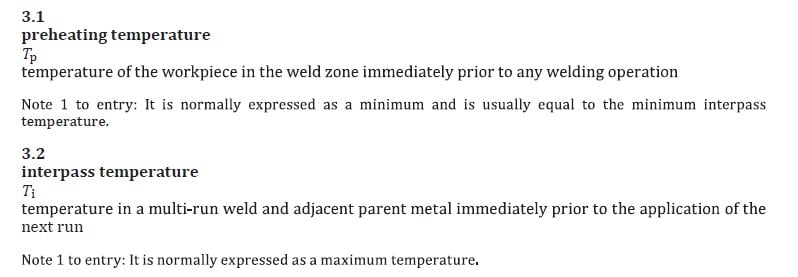A welder is making a test coupon for procedure qualification. The provisional WPS used for making the coupon specifies preheat of 150°C. Welder aims for 150°C, however – after a few passes the actually observed preheat rises to 200°C. Overall, preheat is observed to be in the range of 150°C – 200°C over the course of test coupon welding.
1. What temperature should be recorded on the PQR? 150°C? 200°C? Or, 150° to 200°C?
2. What minimum temperature can be specified on WPS? QW-406.1 says that ‘A decrease of more than 100°F (55°C) in the preheat temperature qualified’ attracts re-qualification. Can one specify preheat of ‘minimum 95°C’ on the production WPS then? (I am guessing this is not how QW-406.1 is intended to be used. If not, QW-406.1 needs rewording).
Similar questions exist for QW-406.3 too – for inter pass temperature.
1. What temperature should be recorded on the PQR? 150°C? 200°C? Or, 150° to 200°C?
2. What minimum temperature can be specified on WPS? QW-406.1 says that ‘A decrease of more than 100°F (55°C) in the preheat temperature qualified’ attracts re-qualification. Can one specify preheat of ‘minimum 95°C’ on the production WPS then? (I am guessing this is not how QW-406.1 is intended to be used. If not, QW-406.1 needs rewording).
Similar questions exist for QW-406.3 too – for inter pass temperature.

